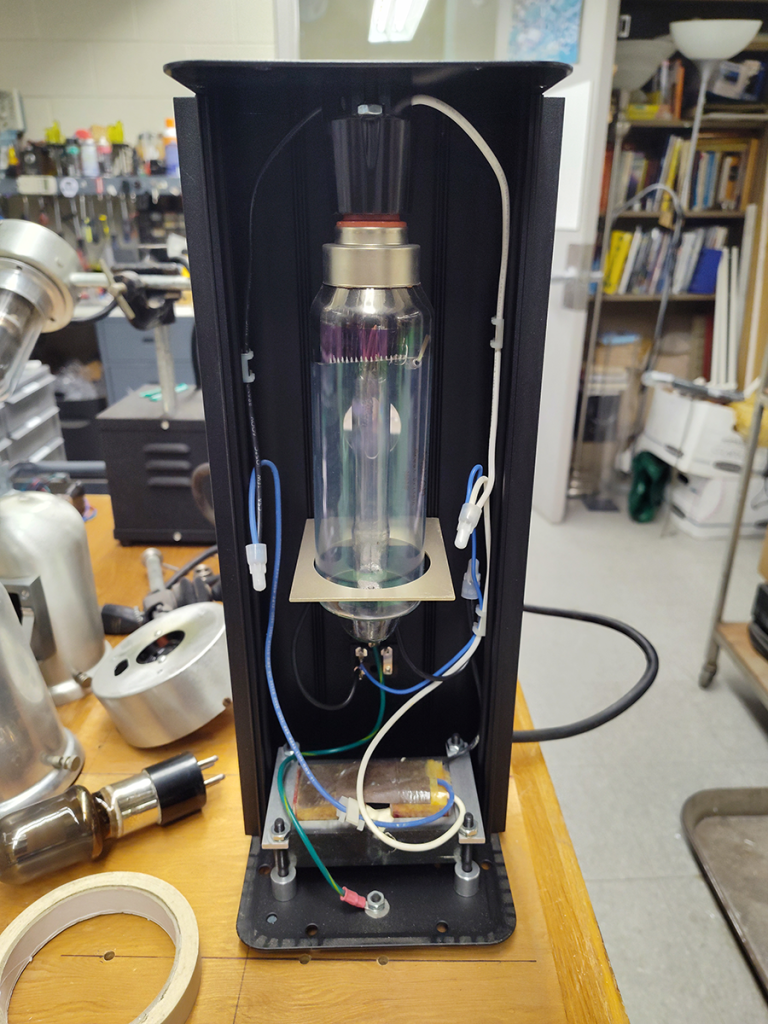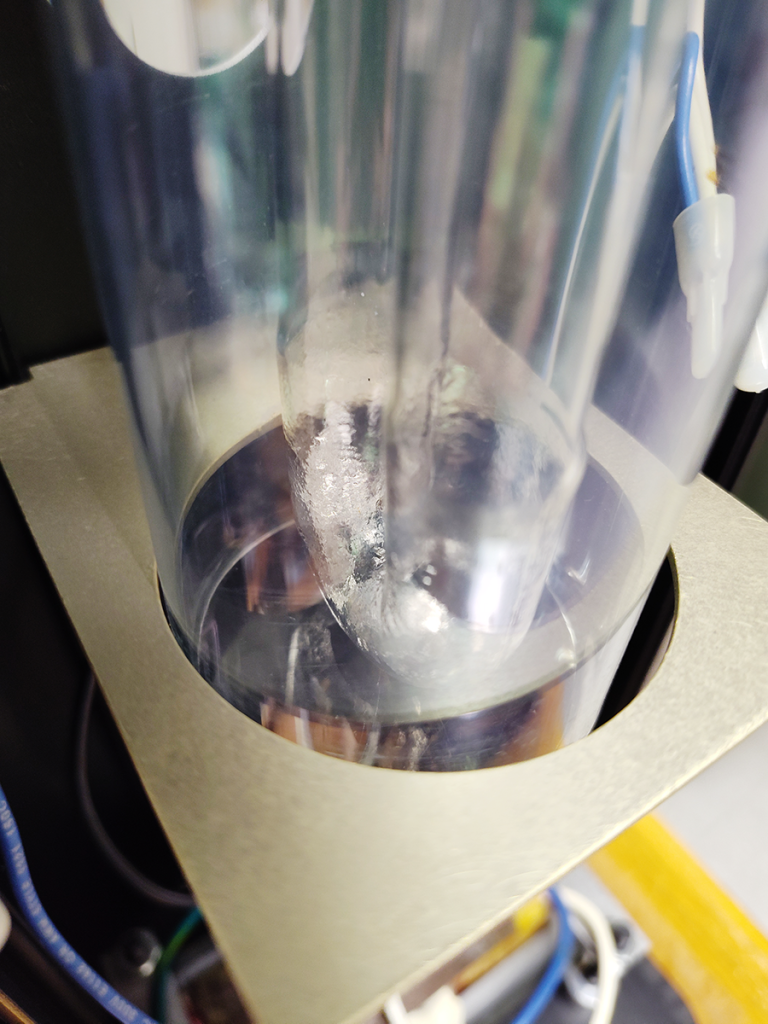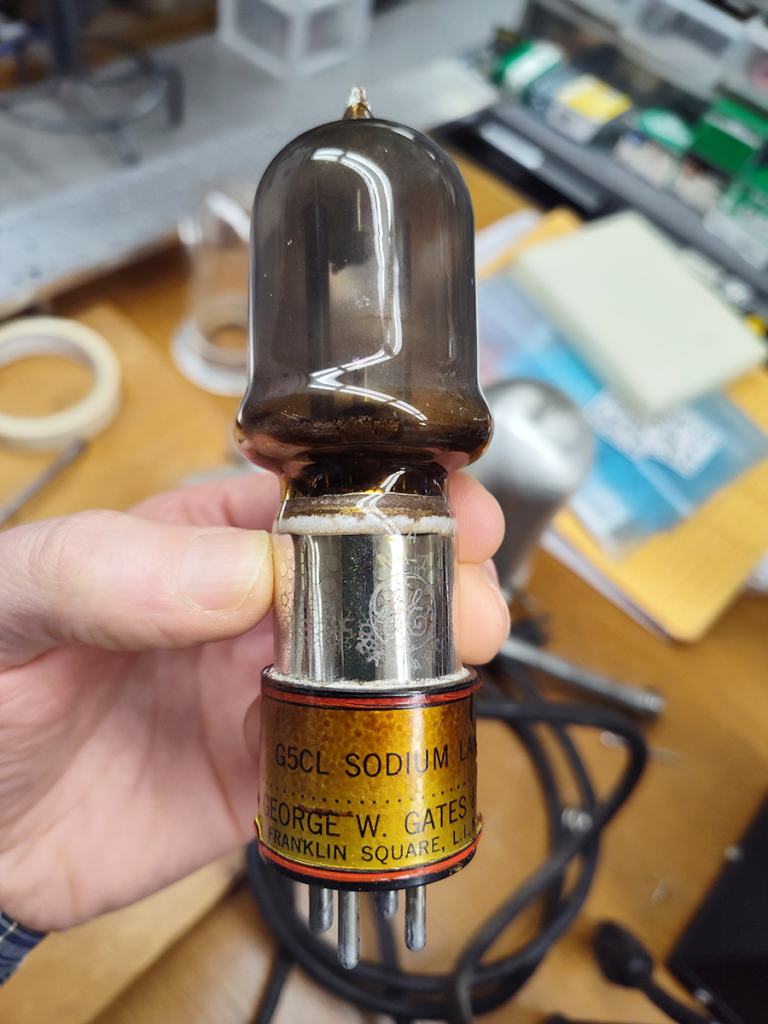
Here, our more modern sodium light sources, using a clever design that enabled a reduction from the minimum 35W to as little as 18W in 1977. Cool, yeah?
Unfortunately, Philips finally bowed out of the low pressure sodium lamp game in 2019, mean we’ve got these dinosaurs running for as long as we can scour spare lamps online. Once the supply’s gone, it’s gone.

Hey, look! Sodium metal! Highly reactive, so it’s inside with a mixture of 99% neon and 1% argon, neither of which deigns to react with, well, anything. That’s why, when it starts up, we see a purplish glow from the noble gases before tube reaches 260°C and vaporizes the sodium. After that, it’s an intense monochromatic yellow-orange that’s hard to look at.
